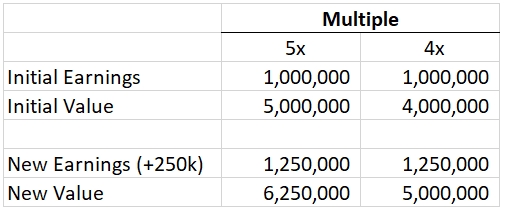[Updated April 2021] Is the M&A Window Closing ?

Note: We originally published this article in late 2019. At the time, our thinking had been, “this has been one heck of a ride… but sooner or later, the wheels are going to come off this hot deal market and the economy!” Well… it turns out we were partially correct. Of course, we didn’t see a global pandemic coming – but much of our thinking then is still applicable now. What’s new, though? The (massive) impact of potential cap gains increases on a transaction. Let’s dive back in.
The Current M&A Market
Depending on who you ask, the M&A market is either lit or is… dreadful. And here is the thing: everyone is right. Are you working in a space where the pandemic has massively negatively impacted you? You won’t be surprised to learn that the only activity is a distressed (aka “fire sale”) transaction. On the other hand, areas that have defended deals are still happening. I can attest that the areas we focus on (Data Science plays like AI / ML / DL, Cyber Security, and Federal) are all experiencing robust transaction markets. For healthy companies, we see solid multiples and healthy auction environments.
And that’s the thing: a well-positioned company for a transaction before maintaining performance is still well-positioned.
This leads me to the headline question: is the M&A market still there, and should I consider selling now?
(I’m going to save you the pain of the next umpteen paragraphs: the short answer is that if you are performing AND you think you MIGHT want to exit in the next few years…. given the tax climate, by all means, you should roll right now. But read on for the details!)
Can You Afford to Sell Right Now?
First off, this is hands down a generationally best sell-side market. If you want to sell a company and can afford to, then, by all means, go to market. How do you know if you can afford to sell right now? You need to answer two questions: what is the current value of my company? And how much do I need? A valuation best answers the former – it’s a relatively modest investment to get clarity from an independent expert on how the market will price the asset you have built. The second question should be answered by working with your financial planner. Getting granular on how your financial situation will look after the sale (using your current valuation as likely the largest input to that analysis) will help answer the question.
Recapping: if what you have (i.e., the current value of your company) exceeds what you need (i.e., the capital that your financial plan requires to meet retirement goals), then by all means, do-no-pass-go and go to market now.
What Do I Gain by Waiting?
For some folks, the outcome of the first step will clear: you absolutely cannot afford to go to market. And clarity is excellent. But what seems to happen more often than not is a gray area. Perhaps the numbers are close but not quite there. That’s not a fun decision framework.
If you are in this category, the real question is, what do you gain by waiting? I’m constantly saying, “the passage of time is not a strategy.” Waiting alone will not fix a value gap – we are already at the peak of the market. Values likely aren’t going to increase materially. Or, put another way, there is at least an equal likelihood that values start to decrease.
With this dynamic in mind, consider this: waiting may make sense if you have a solid strategy to grow value and pursue that plan diligently. On the other hand, if you are hoping that the market further matures and delivers an excellent value for your company… well, I’d politely suggest that that isn’t the best strategy.
This brings me to taxes.
Impact of Capital Gains on a 2021 Transaction
So you’ve gone through the first decision point and concluded that you could afford to sell. What happens if you delay that decision a bit? You potentially face a big tax hit that is 100% out of your control. For many companies, that preponderance of their transaction is taxed at capital gains rates vs. ordinary income. I’m going to do some rounding here (forgive me in advance if you are a tax person reading this) – but that currently means about a 20% tax rate.
The current proposals would bring that rate to ordinary income rates- i.e., approaching 40%. I.e., double the current rate. My money is on it not going quite that high…. but on moving up significantly from the current rate. So with that said, assuming that the rate increase isn’t retroactive…. why on earth wait until AFTER that increase? For all intents, it’s found money to do a deal now.
So recapping – if you can afford to sell and want to… now is the time to go to market. Waiting will likely move the goalposts on post-tax proceeds.
What is the Probability of Success?
Let’s assume that you will pursue a value growth strategy to close your value gap. How confident are you that you can execute on the plan?
Similarly, entrepreneurs are constantly chasing the next big thing. We all do this – the next big project, the upcoming contract win, or maybe the new product launch. Healthy businesses always have a next new thing- it’s what feeds the beast and underpins growth. But that same cycle can feel like a hamster wheel with owners constantly chasing the next increment of success.
In either case, it’s time to start handicapping the likelihood of successful execution. On our end, when we work with clients on value engineering assignments, we do just that: by correlating actual impacts to enterprise value to both the probability of success and time to execution we can start to understand how value might change over time. For instance, a given initiative might result in an additional $250k of income, require 18 months of time, and have a high likelihood of success. If the market currently would value that company at 5x, that initiative is worth $1.25M in enterprise value.
What is the Probability that the Market Turns First?
Of course all this assumes that we have time to execute. The market, being a nebulous collection of individual participants, doesn’t care about our plans whatsoever. Take our example from above. What would happen if you executed on plan and in 18 months … but the market turns and now prices the company at a 4x? Well… it’s not going to feel good, that’s for sure. See below:

In our example – that quarter million dollars of hard fought gains would yield exactly zero dollars in improved enterprise value in a market downturn. That’s not to say it’s not a worthy project – the company would still be delivering those earnings back to shareholders. But in terms of pursuing a sale you very well could be literally missing the market.
Takeaways
We are always talking about how “timeline is everything.” If you have a short term horizon you can only impact so many things. Your decision to go to market now means you aren’t going to massively increase enterprise value suddenly. And that’s okay if the numbers work for you – it’s a great market! If you do decide you need to wait – be it for that next big win or to put in some hard work – that’s okay too. Just understand that you are on the clock and that a market downturn may erase the gains you’ve been holding out for. Finally, if you run the numbers and realize that you need to grow value beyond what can reasonably be expected in the short-term then it’s time to buckle in for the next 3-5 years and enjoy the ride.
Need some help working on this decision matrix? Drop us a line.